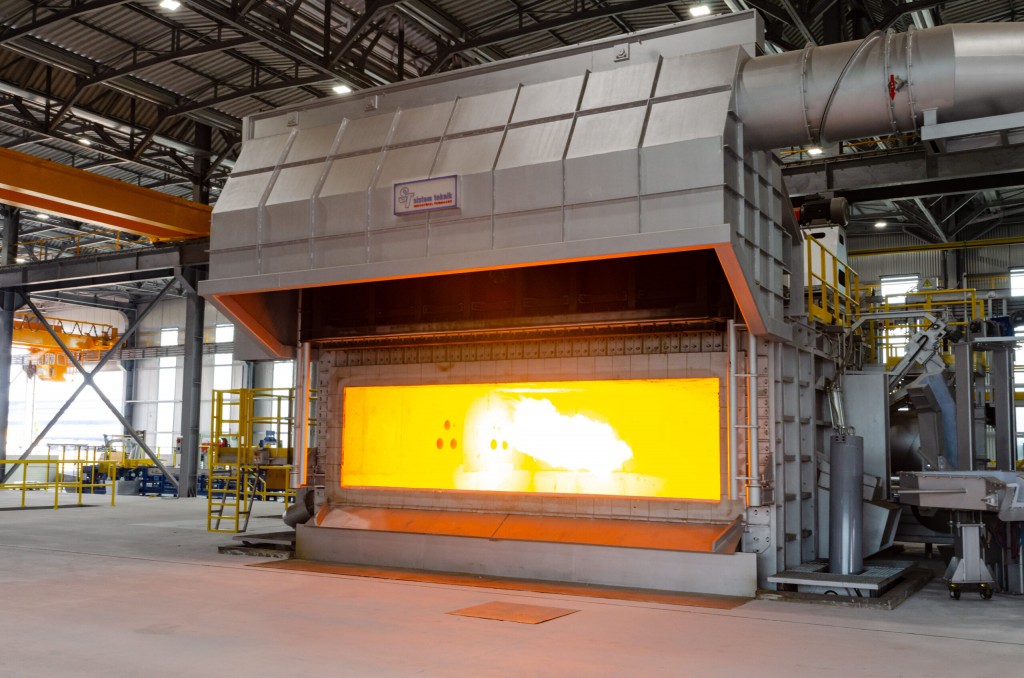In the field of metallurgy, heat treatment is now an indispensable process for improving many metals’ physical and mechanical properties. Particularly when it comes to a ubiquitous and versatile metal like aluminium, the proper application of heat treatment is paramount to unlock the metal’s full potential.
Aluminium is already an extremely versatile metal, and proper heat treatment can expand this functionality by an order of magnitude. This article will give a brief primer on the ins and outs of heat treatment for aluminium, including why it is so important for modern applications.

Understanding the process of heat treatment
Heat treatment is a process that involves subjecting aluminium (among other metals) to exact and precisely controlled heating and cooling cycles to modify its physical properties. These modifications change the metal’s hardness, strength, malleability, ductility, corrosion resistance, electrical and thermal conductivity, and other intrinsic properties.
The term’ heat treatment’ encompasses several different processes that change the microstructure of aluminium to achieve desired results. These steps can be broadly categorised into the following:
Solution Heat Treatment (Annealing) – In this initial stage, the aluminium is first rapidly heated to a specific temperature to dissolve any alloyed elements. This is followed by rapid cooling, which “quenches” the metal, locking in the dissolved elements.
Precipitation Hardening (Aging) – The quenched aluminium is subjected to a controlled ageing process. During this stage, the dissolved elements mature, forming finely dispersed particles that increase the metal’s hardness and strength.
Homogenisation – A homogenisation process may be carried out to ensure uniformity, especially in speciality alloys. This involves slowly reheating the material to redistribute alloyed metals and eliminate structural heterogeneity.
Annealing – For aluminium that requires better ductility and malleability, annealing is performed. This process involves heating the material and then slowly cooling it to relieve internal stresses and change the structure.
Since aluminium is a metal particularly sensitive to heat, precise heat control is crucial to achieve optimal results. This metal’s malleability and light weight make it an ideal choice for various industries, but to optimise its performance, heat treatment is imperative. This is why specialised furnaces and ovens are needed to heat treat aluminium. These ovens have unique features like temperature-control modules, energy-efficient zone control, controlled recirculation fans and custom nozzle designs, all for optimising the heat-treating process. Furthermore, these furnaces often have integrated air pollution control systems, making them more energy-efficient and environmentally friendly.
The importance of heat treatment in aluminium production
Malleability and Ductility – Aluminium alloys are often heat treated to increase their ease of moulding during manufacturing. With the right heat treatment, the metal becomes much more malleable and ductile, allowing it to be shaped into more complex yet precise shapes, a hard requirement in industries like automotive and aerospace.
Strength and Durability – Heat treatment is essential for increasing aluminium’s strength and durability. This treated aluminium is much more resistant to wear, tear, and corrosion, resulting in longer-lasting products. Again, this is particularly important for the sectors of automobiles and aerospace, as well as some architectural uses.
Lamination – Another crucial use of heat treatment is coil-coated laminated aluminium sheets. These are increasingly in demand these days for their light weight, strength, and vibration-dampening.
Some notable uses of aluminium need precise thermal and electrical conductivity, such as in the electronics, aerospace, and solar panel sectors.
The automotive industry, perpetually driven by the pursuit of better fuel efficiency and performance, is a prime beneficiary of advanced heat treatment for aluminium. To create components that are not only lightweight but also structurally strong, such as engine parts and chassis frames, specialised heat treatment processes are vital these days.
The aerospace sector represents another key area where heat treatment for aluminium is indispensable. Aircraft aluminium components must withstand extreme conditions and operate with unerring precision. To meet these stringent requirements, the aerospace industry extensively uses heat-treated aluminium.
Conclusion
Heat treatment is the secret behind unlocking the full use of aluminium in many modern applications. Whether it be automobiles, aerospace, or solar panels, it is an essential aspect of ensuring the finished product’s quality, longevity, and performance. Precise and controlled heat treatment is not merely an industrial process but a key enabler of innovation in modern manufacturing. It enables the creation of lightweight and durable products across a broad spectrum of products.
Gain comprehensive insights into the pivotal role of heat treatment within the aluminium industry by delving into AL Circle’s publication titled “Heat Treatment: Challenges and Solutions in the Aluminium Industry.” This edition elucidates the intricacies of heat treatment processes, highlighting their critical significance in the aluminium sector. Immerse yourself in a wealth of knowledge that addresses challenges inherent to heat treatment while presenting effective solutions, contributing to a nuanced understanding of this indispensable facet of aluminium
manufacturing landscape.

